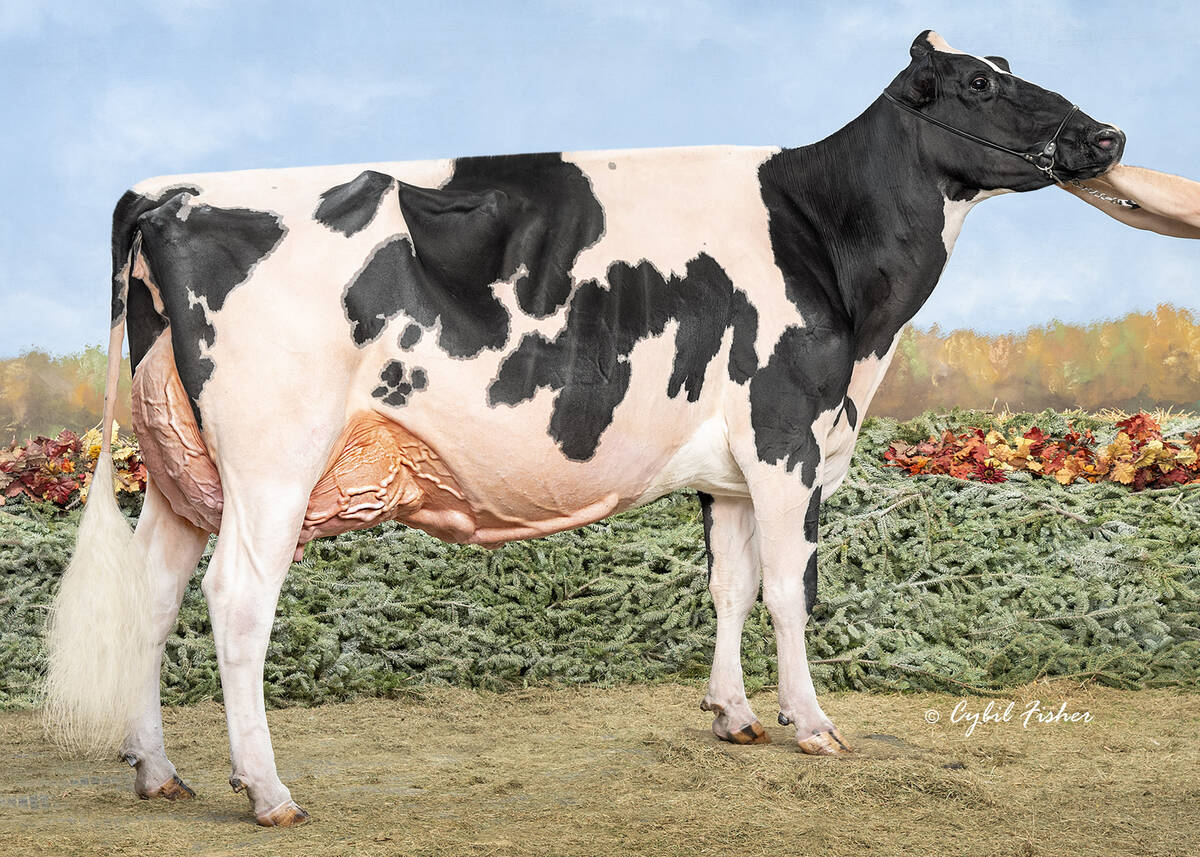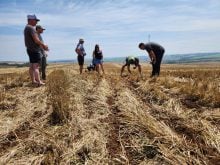Given the extensive drought in Alberta this summer and hay selling for five to six cents per pound, a casual observer would likely compare this summer to 2002.
The weather was extremely dry that year and feed prices soared.
However, there is one significant difference in 2009, said Ken Ziegler, a beef specialist with Alberta Agriculture. The perspective of today’s cattle producers is nothing like the heady days of 2002.
“We used to get $700 to $900 a calf …. We were just going to beat the band,” he said.
Read Also

Saskatchewan dairy farm breeds international champion
A Saskatchewan bred cow made history at the 2025 World Dairy Expo in Madison, Wisconsin, when she was named grand champion in the five-year-old Holstein class.
“For the last three years, we’ve been getting $450 for a heifer calf and $600 for a good steer …. So the culture today is very different … (and) paying $100 to $120 per ton for hay is absolutely asinine.”
Ziegler said the consequence of the reduced expectations is that producers facing a feed shortage this winter will promptly sell their cattle.
“We anticipate a very significant herd liquidation, if prices stay at the levels that they are,” he said.
Larry Wade, a cattle producer near Saskatoon, sold hay for $25 per round bale three years ago.
He has since moved his farm and sold off his forage land, but he still has a cow-calf operation with fewer than 30 cows and has to buy hay to feed them.
If the price of forage is still high when his cattle come off pasture this fall, Wade said his decision will be easy.
“If I have to pay $100 per bale, I’ll sell the whole works,” he said.
“If it’s costing you $500 to $600 to winter a cow and you only get $500 to $600 for the calf in the fall, where’s your profit? And that doesn’t take into account any other expenses.”
Wade based his calculations on a price of $100 per bale and requiring five or six round bales per cow over the winter.
The bottom line for Wade is $50 to $60 per bale, based on a 1,500 lb. bale. Anything above that doesn’t make financial sense, he said.
He said prices could fall further if a substantial number of small operators cull their herds.
Move to greener pastures
However, Ziegler said there is another option – relocating cattle to places like Manitoba where pastures are lush in many parts of the province, thanks to incessant rain this summer.
“That’s a message that I personally have been advocating,” he said. “It’s worth it, considering the depreciation you get on the cow, or the prices you have to pay for feed.”
Joe Bouchard, president of the Manitoba Cattle Producers Association, doubts farmers in his province are interested in such an arrangement.
Bouchard, who farms in the Interlake, said feed is short in the region and most cattle producers are planning to keep their cattle on pasture as long as possible.
That means they aren’t interested in hosting an additional 500 animals because it could reduce the length of the grazing season.















